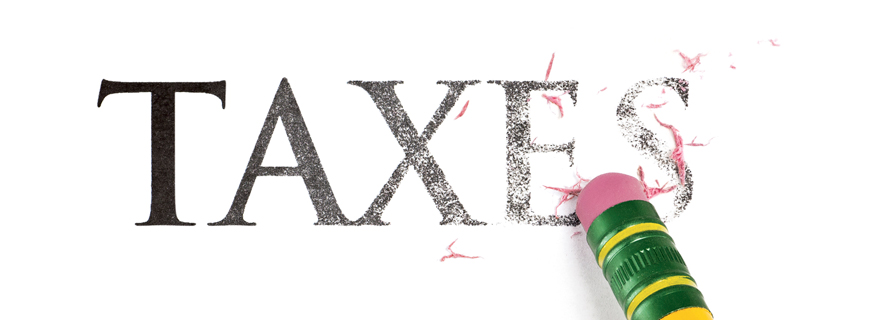Let’s face it: Nothing in life ever goes exactly as planned. And that goes double for money matters. How many times has this happened to you? Just when you think you finally have some breathing room in your budget, an unexpected expense comes along and wipes it out.
One way to prepare for the unexpected is through budgeting. In technical terms, budgeting is the systematic allocation of one’s limited resources (income and liquid assets) toward a potentially unlimited number of needs and wants (expenses). To put it simply, budgeting is merely balancing your outgo versus your income.
Unfortunately, the word “budget” -sort of like “diet” or “economize” — has negative connotations. Although sometimes tedious and difficult to stick with, smart budgeting can help you better control how your income is being spent – leaving you with more money to invest or put away for those inevitable rainy days. A budget is a financial plan for spending; not a bookkeeping chore of keeping track of every penny.
The Budgeting Process
Budgeting is essentially a management process that follows these steps:
- Establishing your goals.
- Estimating your monthly household income.
- Estimating your monthly expenses.
- Balancing the budget.
- Putting your plan into action.
- Adjusting the budget as necessary.
Step One: Establishing Your Goals
First, review your family situation (marital status, dependents, family additions or departures). This review will set the table for establishing your short-, intermediate-, and long-term goals. Short-term goals may be purchasing a new car, taking a vacation or building a new home theater. Intermediate-term goals might include changing careers, sending a child or children to college, or saving for a house downpayment. Longer-range goals include accumulating a retirement portfolio, buying a vacation home, and leaving a financial legacy to your heirs. Each of these takes money – and planning, including budgeting.
Step Two: Estimate Your Income
Whether your household income is regular, such as a paycheck every two weeks, or irregular, such as that received by a farmer or other person in business for him or herself, helps determine how a budget is established and followed. Whether expenses are regular or irregular also makes a difference in the budget.
Add together all your income sources including take-home pay, interest, dividends, bonuses, pensions, alimony and child support, etc. If you’re self-employed, determine just how much you have available for living expenses by examining personal and family goals, business goals, and living and business expenses. If your income fluctuates, underestimate your income and overestimate expenses. Avoid relying heavily on bonuses or overtime pay
Step Three: Estimate Your Expenses
Your expenses will likely fall into four categories: 1) fixed expenses, such as rent or mortgage, car payment, utilities, telephone, cable, and the like; 2) periodic expenses such as annual homeowners insurance, car insurance and maintenance; 3) flexible expenses including food and clothing, entertainment, travel, and other leisure activities; and 4) emergency expenses such as car accidents, home repairs, medical expenses, and so on.
Are you planning a major change during the coming year such as a move, changing jobs, buying a house, getting married, having a child, entering the job market or buying a new roomful of furniture? Be sure to account for these changes, because every major life event affects your budget.
Step Four: Balance Your Budget
Subtract fixed expenses, including an amount for investing and saving, from your expected income. Then, subtract the total amount of flexible expenses from what is left of income. If you need to cut back on your expenses, start first with the flexible expenses, then move to irregular expenses, and finally, to fixed expenses. If you have a surplus after subtracting expenses from income, consider adding more to your goal-related savings and investing.
Step Five: Put Your Plan into Action
This is probably the most difficult part of using a budget. Keep records of actual spending and compare them with your budget plan at the end of the month. By keeping records, you can better understand exactly where your money goes each month, discover if you’ve over- or underestimated certain expenses, and identify areas you might be able to cut back (like those daily $3 gourmet coffee drinks!).
Step Six: Adjust Your Budget
Adjust budget plan figures if necessary, based on the recordkeeping in Step 5. It may take several months of adjusting and re-adjusting before your plan works smoothly.
The real payoff of working with a budget plan and keeping records will come when you use your past year’s budget and records to plan for the future. Budget records can help you pinpoint spending leaks or spot potential trouble before it occurs.
Some Smart Budgeting Tips
Keep it simple. Don’t detail your plan to the penny. Keep track to the nearest dollar or even the nearest five dollars. This works only if you set your “breaking point” and stick to it. For example, if you prefer to keep track to the nearest dollar, set $.50 as your breaking point. If the amount to be recorded is $49.49, you drop the cents and write down $49. But if the amount is $49.50, you write $50. Such a system keeps some of the drudgery out of recordkeeping.
Be realistic. Consider all expenses, including vacations, spending money, alcohol, tobacco and hobbies. To build in a margin of safety in your plan, overestimate your expenses and underestimate your income.
Provide for personal allowances for everyone in your plan. Then give each person total control of his or her allowance. By providing everyone with an allowance, no matter how small, you are giving everyone money to spend as they wish when the urge comes. This is especially helpful in helping children learn that money is not an infinite resource!
Don’t expect someone else’s budget to work for you. When you see a budget in the newspaper or magazine, realize it is for a particular situation or for an “average” or “typical” family. It’s important to tailor a spending plan to your individual needs and situation.
Distinguish between wants and needs. Buy what you need first. The wants belong in the “what’s left over” category.
Borrow with care. Remember, you create a fixed expense each time you charge something or pay “on time.” Even though it might give you pleasure to own something right now, consider all the interest you’ll be paying and ask yourself if it’s really worth the price. If possible, use cash for ALL your impulse purchases.
Plan for and develop an emergency fund! This is perhaps the most important element of all.
If you would like help in developing a budget that meets your income and expenses of today while designed to provide financial security for tomorrow, we can help. Please feel free to contact us for advice and guidance.
Material discussed is meant for general illustration and/or informational purposes only and it is not to be construed as tax, legal, or investment advice. Although the information has been gathered from sources believed to be reliable, please note that individual situations can vary therefore, the information should be relied upon when coordinated with individual professional advice. Past performance is no guarantee of future results. Diversification does not ensure against loss. Source: Financial Visions, Inc.




















